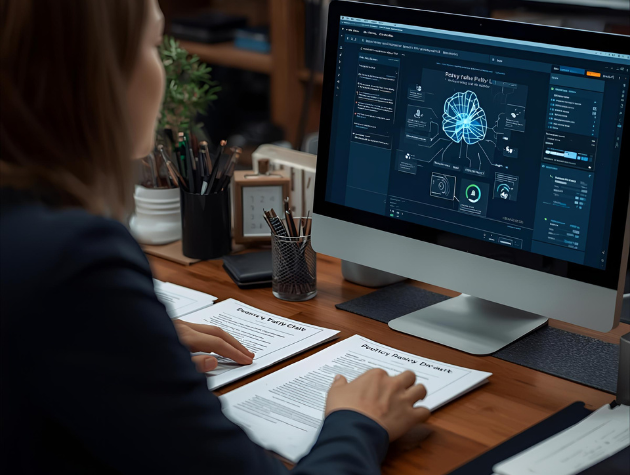The legal department of a mid-sized multinational faced a quiet but persistent challenge. Business leaders kept pushing for modern workflows, while technology teams were already experimenting with enterprise AI. The general counsel knew speculation wasn’t enough anymore—GenAI had arrived. The real question was whether it could play a meaningful role in AI policy drafting, a process crucial for effective governance.
Instead of waiting for outside pressure or slick vendor pitches, the department decided to run its own controlled test. The goal wasn’t to see if AI could replace lawyers’ judgment. It was to explore how it might actually fit into the daily work of creating governance documents, particularly focusing on AI policy drafting.
AI Policy Drafting: A Legal Experiment Without the Hype
The team chose a low-stakes policy template that had been revised several times before—something tied to third-party risk, not a headline regulatory issue. Importantly, the draft would never be circulated. This was a safe, diagnostic experiment, not a live rollout of AI policy drafting methods.
One version of the policy came from a staff attorney, who used precedent language, guidance, and board updates. Another version was generated by an AI tool trained on company-approved sources. Reviewers didn’t know which draft came from which source. They judged both using the department’s usual standards: clarity, legal soundness, structure, and alignment with the company’s risk posture, all crucial for effective AI policy drafting.
This was no flashy tech showcase. No slide decks, no marketing team, no promises. The only audience was the legal team itself.
Comparing Human Drafting and AI Policy Drafting
The reviewers treated both drafts like any other policy update. They flagged unclear terms, missing requirements, and structural gaps. In short, they gave the AI and the human drafts the same level of scrutiny they would before sending a policy to executives, particularly in the context of AI policy drafting.
Both drafts held up under review. Both needed revisions. Neither was perfect. Yet the lessons were distinct.
The human draft carried institutional memory. It included references to past audits, aligned with existing workflows, and matched the tone of other policies. The AI draft was faster, well-structured, and neatly formatted, but it missed some nuance. For example, it left out an internal escalation path and used generic language that didn’t reflect the company’s actual risk strategy.
Still, it performed better than many expected. More importantly, it sparked discussion.
Measuring What Matters in Policy Work
Instead of focusing on word count or polish, the team judged the drafts by real-world criteria: Did the scope stay clear? Were the obligations enforceable? Did the draft align with risk categories the business already used? Could business partners understand it without confusion? These factors are essential in AI policy drafting.
The results spoke clearly. AI could help draft governance documents that follow set formats and draw on structured inputs. But it couldn’t catch organizational sensitivities, recall negotiation history, or weigh the trade-offs in ambiguous language. That work required human judgment.
With those insights, the department set a clear stance: AI could support early policy drafting where frameworks were established, but all drafts still required legal review. And any policies touching regulatory risk, sensitive data, or cross-border rules would stay human-led unless specifically approved. Oversight wasn’t optional—it was built in.
Turning Pilots Into Practice
The team didn’t pitch its findings as a breakthrough. Instead, it framed the results as a governance readiness update. The message to executives was simple: the legal team had tested new tools using its own standards and developed safe, practical guidance. No efficiency promises. Just credibility, consistency, and balance.
Executives appreciated that approach. Legal hadn’t waited for a crisis or for another department to lead. It had tested AI on its own terms and created a model for thoughtful adoption.
And that model could be reused. Other governance areas—like AI assessments or employee technology use—could now be examined with the same method. This wasn’t a one-off test. It was the start of a repeatable process for responsible experimentation.
Lessons for Legal Leaders
Not every legal department needs to run a GenAI trial. But every team will eventually need to answer the same question: does this tool belong in our work? White papers and product demos won’t answer that. Real-world pilots and AI policy drafting trials will.
Policy drafting is a natural place to start. It’s repeatable, structured, and central to legal’s role in setting guardrails for the business.
When used responsibly, GenAI doesn’t replace those guardrails. It sharpens them—making them clearer, faster, and more consistent.
In the end, the two drafts—one human, one machine—offered more than a comparison. They served as a reminder: legal innovation isn’t about choosing between tradition and technology. It’s about designing systems where both can do their best work.



